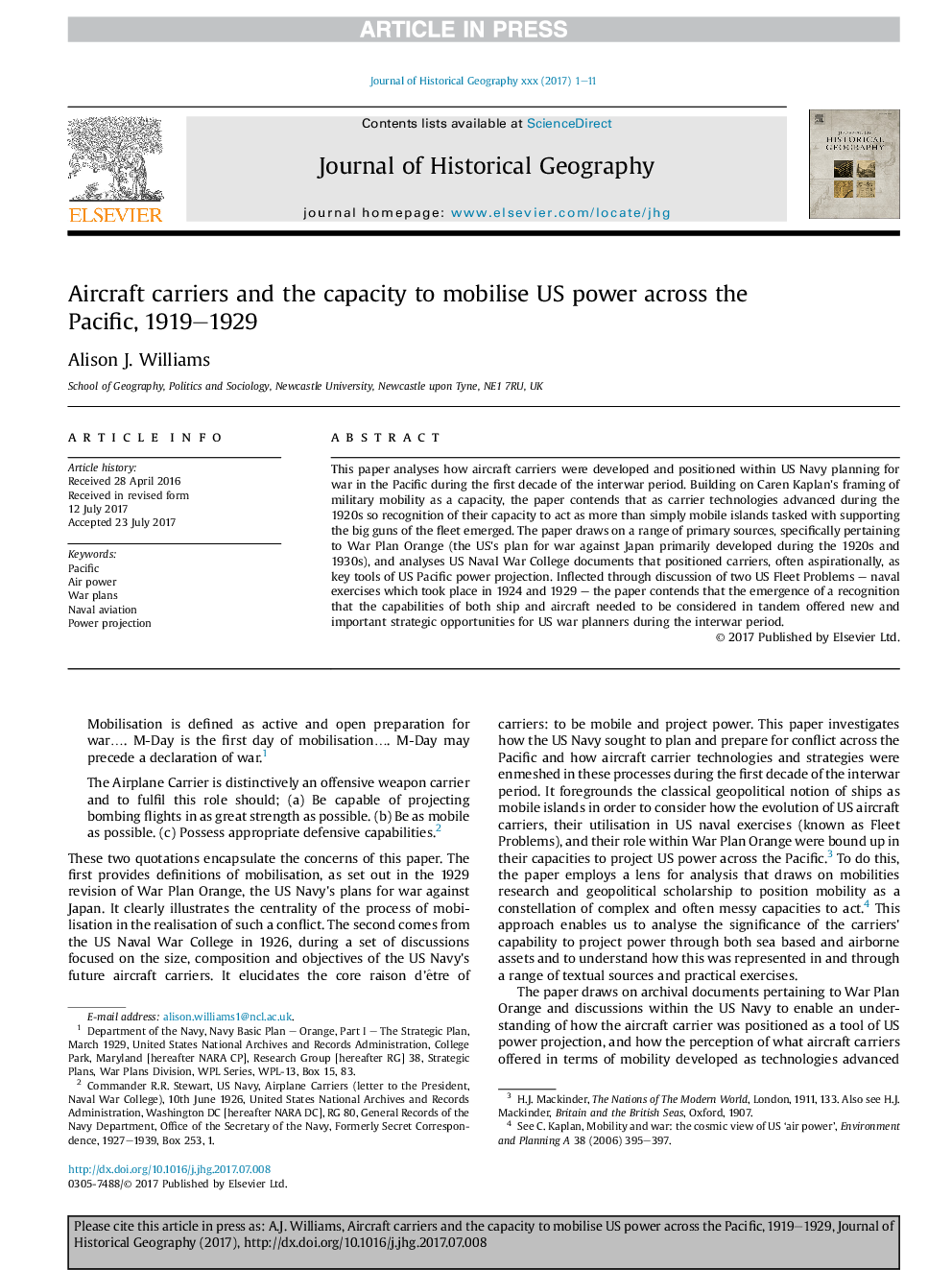| Article ID | Journal | Published Year | Pages | File Type |
|---|---|---|---|---|
| 7447025 | Journal of Historical Geography | 2017 | 11 Pages |
Abstract
This paper analyses how aircraft carriers were developed and positioned within US Navy planning for war in the Pacific during the first decade of the interwar period. Building on Caren Kaplan's framing of military mobility as a capacity, the paper contends that as carrier technologies advanced during the 1920s so recognition of their capacity to act as more than simply mobile islands tasked with supporting the big guns of the fleet emerged. The paper draws on a range of primary sources, specifically pertaining to War Plan Orange (the US's plan for war against Japan primarily developed during the 1920s and 1930s), and analyses US Naval War College documents that positioned carriers, often aspirationally, as key tools of US Pacific power projection. Inflected through discussion of two US Fleet Problems - naval exercises which took place in 1924 and 1929 - the paper contends that the emergence of a recognition that the capabilities of both ship and aircraft needed to be considered in tandem offered new and important strategic opportunities for US war planners during the interwar period.
Keywords
Related Topics
Social Sciences and Humanities
Arts and Humanities
History
Authors
Alison J. Williams,
